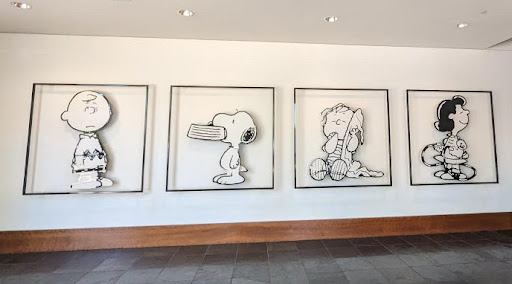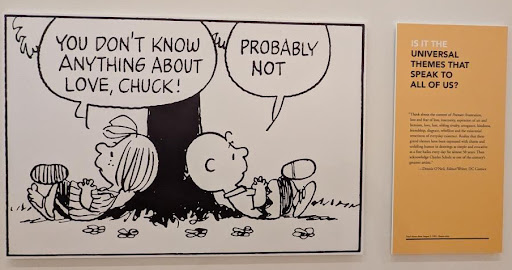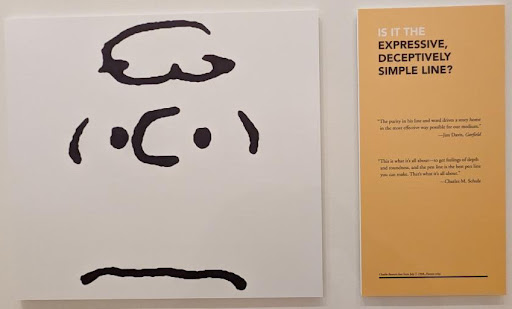
15 Jun Art Journaling for Mindfulness Part 4: Your Story – Picture This
By Barbara K. Stump, MA
“If you read the strip, you would know me. Everything I am goes into the strip—all of my fears, my anxieties, and my joys.” —Charles M. Schulz
How familiar are you with the comic strip called Peanuts and its creator, Charles Schulz? I’m guessing most of you are! Can you recall the following characters: Charlie Brown, Lucy, Snoopy, Linus, Sally, Schroeder, Peppermint Pattie, Franklin, Woodstock, and others? Do you have a favorite? I imagine most people would say Snoopy, but to Charles Schulz his life played out to all of us through the characters in Peanuts. He had the gift of being a storyteller and also an artist. Some say if you are able to tell your story to others, you have the power to change lives. This could be true for yourself as well. Being able to express our own feelings and process them is not only healthy, but it’s kind of liberating. So, for this art journaling prompt the focus is on storytelling and how we can utilize it to express our emotions and explain how a certain feeling arose from events leading up to it. It could turn out to be funny like a comic strip, or not, it’s up to you.

Growing up, the best part of the Sunday newspaper for me was the comic strip section, especially reading Peanuts. I can vividly remember my parents enjoying their coffee, reading the paper, and having that section set aside for me when I got up in the morning. Enthusiastically I immersed myself in the entire section before having my breakfast. Peanuts was always the first comic strip, followed by Beetle Bailey, Blondie, Dennis the Menace, Garfield, Calvin and Hobbes, and a few others. Perhaps some of you reading this can recall doing this as well in your younger years!
Schulz was also known as “Sparky,” a nickname bestowed upon him by an uncle two days after he was born in Minneapolis, Minnesota, on November 26, 1922. “Sparky” was named after the horse Spark Plug from the Barney Google comic strip. Inevitably he was destined to be a comic strip artist. He also described his life as being “one of rejections”, we see this told mostly through the character of Charlie Brown in the comic strip. Interestingly, Schulz did not name the main character after himself, but rather after a colleague he worked with at the Art Instruction School in Minneapolis, named Charlie Brown.
As an adult, looking back at the Peanut comic strips is cathartic. Schulz utilized so many personal feelings and life challenges as inspirations for his stories. He was a dedicated artist and worked on his craft daily. Part of the process allowed him to work through his experiences growing up and acknowledging he was helping youngsters through his work. Do you remember how the adult voices sounded in the Peanut’s special movies? “Wah, wha, wha…,” the muted trombone sound is so distinct. The emphasis always seemed to be focused on the kids; who they represented and what they were doing. He shared their emotions, but always included a sense of humor in the delivery. It was enjoyable and comforting to read, because he addressed humanity.

“As each character’s personality has been fleshed out over the years, readers came to intimately understand Linus’ attachment to his Security Blanket, Charlie Brown’s heartache over the Little Red-Haired Girl, Schroeder’s devotion to Beethoven, Peppermint Patty’s prowess in sports and failure in the classroom, and Lucy’s knowledge of … well … everything.” – Charles Schulz, Charles M. Schulz Museum and Research Center, Santa Rosa, California
The themes in Charles Schulz’s comic strip are universal. We can all admit exhibiting those emotions shared in the Peanuts Comic Strip at one time or another. Schulz so eloquently explored these feelings drawn out with a simple line and short story to go with it. As a reader, it was easy to follow and empathize. So, here’s the idea: create something just for you to reflect your own thoughts about the day, an event, or an experience. Take time to soak it all in and journal how you felt about it. Make it something you can record in the way you want to remember it. You do not have to create full out drawings. Your thoughts can be captured in small panels with simplified, yet expressive lines.

I think the way Schulz approached his comic strips may be helpful in your planning. His widow, Jean Schulz, describes it best. “He used to draw the last panel first, because he said, ‘I don’t want to have an idea, and then I get to the end and it doesn’t work.’ He wanted to make sure the joke worked. He would make sure that panel worked and fill in the others.” Using Schulz’s approach, if you already know how you feel about something you can show that in the last panel, and then backtrack on the events that led up to this.
*Feel free to use the grid below or create one of your own in your Art Journal.

One of my favorite quotes from Charles Schulz is, “Don’t sell anyone short.” Another favorite is “Believe in yourself and do what you love; find something to do that you love.” Do this because, “There are a lot of Mondays.” Charles Shultz did what he loved up until the end of his life, and in 1999 he planned his retirement. He only drew enough strips after that to last until his death on February 12, 2000. His final strip was published the day after his death, on February 13, 2000 announcing the end of Peanuts, and a farewell from its creator. No other artist will ever draw Peanuts, this was Schulz’s and his family’s intention. Today what we see online and in print are reruns. Isn’t this just as it should be? Afterall, they were his thoughts, emotions, original drawings and characters. Likewise, only you can explain your fears, anxieties, and joys by telling the story leading up to them. Unfortunately, everyone takes lumps in life. If you can find humor along the way, and get back up, then you might consider yourself as lucky as “Sparky” did. It is true, everyone has problems in life, but know you are not alone and your story may help someone else someday.
Barbara is an art education consultant and G3 contributing writer.

